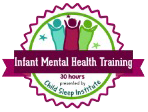Sunday, November 5, 2023, 2:00 Am Clocks Are Turned Backward
Looking for Fall Daylight Savings Time Change Tips? The fall time change is just a few weeks away and I have parents asking me: “What can we do to make the adjustment to the new time easier and protect our toddlers sleep?” Or, “My baby sleeps through the night but is an early riser. How can I help my infant sleep longer in the morning?”
With the fall time change we “Fall Back” which means you will be putting your little one to bed at a time that is an hour later than what they are accustom to. I find this especially daunting when you have children less than 4-years of age. Why you ask? Because, if the amount of time your baby or toddler is awake from last nap to bedtime is too long, there is a risk of night awakenings increasing. Because of this it is my recommendation that you nudge your 6-month old to 4-year old into the time change.
Here are two strategies to consider for children or babies six months or older:
- Bridge The Gap: Split The Time Change Difference Before Daylight Savings Day
- The week before the time change shift the bedtime schedule later by 15-20 minutes a day until you get to a full hour. Or, get to a bedtime that is 30-minutes later before the time change and then finish the final 30-minute shift after the time change.
- Be sure to shift the nap and eating schedule at the same rate.
- This plan is especially helpful for the “Lark Babies” who are naturally early risers. The time change in spring is in your favor but the fall time change can be really challenging for those little Lark Babies. The “Ease In” approach below might not be a good fit in the fall for early risers.
- Ease In: Start On Daylight Savings Day
- Allow your child to wake up for the day when they want to naturally; most likely it will be an hour early on the “new” time.
- Naps Strategy:
- Do what you can to ensure that they get enough sleep in the day with assisted naps when necessary.
- If your baby is taking more than one nap a day:
- Keep the amount of time your baby is awake between morning wake-up and first nap the same as it has been. Example: Most babies will need to be asleep for the first nap 2-hours after morning wake-up time. This might seem early for the first nap on the “new” time.
- If it is evident, that there is going to be at least one wake window in the day that is going to be too long, then it is better to do the long wake window stretch in the middle of the day and not between last nap and bedtime.
- Move the last nap 30-minutes later than usual. This will help keep the wake window between nap and bedtime from being too long as you are nudging them to new bedtime.
- If your toddler is only taking one nap a day, consider moving the nap 30-minutes later than usual. This will help keep the wake window between nap and bedtime from being too long as you are stretching them to the new bedtime.
- Nudge your baby or toddler to the new bedtime by at least 15-minutes the first day. If they have been going to sleep at 7:45 p.m. then on the “new” time they will want to go to bed at 6:45 p.m. Do what you can to stretch them to 7 p.m.
- Over the next few days continue to nudge bedtime by 15-20 minuets a day until you get to a full hour.
My last bit of encouragement would be to “Keep Your Calm On”. Because your little one will be really tired at the end of the day, they might need more help and require more of your patience for the first few days. They also might wake up early in the morning until their bodies adjust. Although, the time change occurs on a Sunday, I find that Monday is typically the harder day to manage. Consider making Monday’s schedule simple, especially in the evening.
If you find that after a couple of weeks your baby is not adjusting to the new time change, feel free to request a 30-Minute phone consultation with Jen Varela. Have just a question or two on how you can improve your baby’s sleep? The Sleep Talking Tuesdays: FREE Q & A Sleep Support would be a great option. It is offered twice a month, check the Sugar Night Night calendar, to find when it is offered next.





Comments are closed.